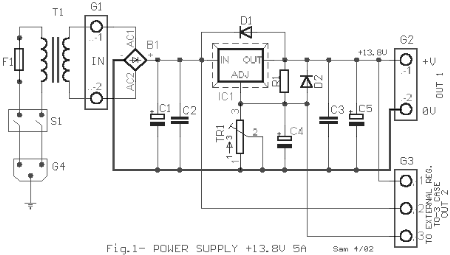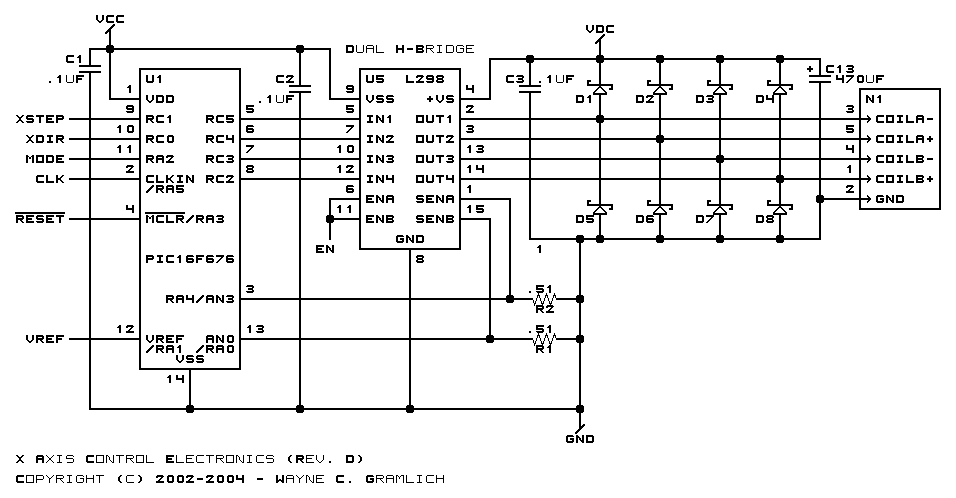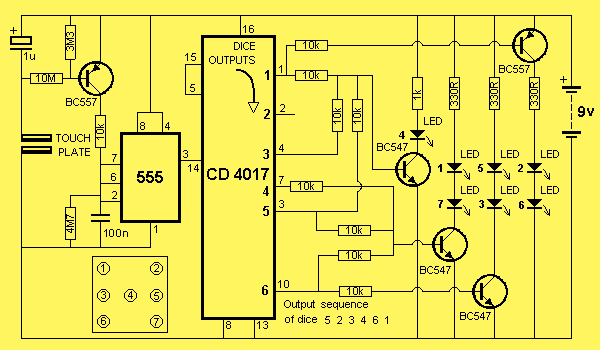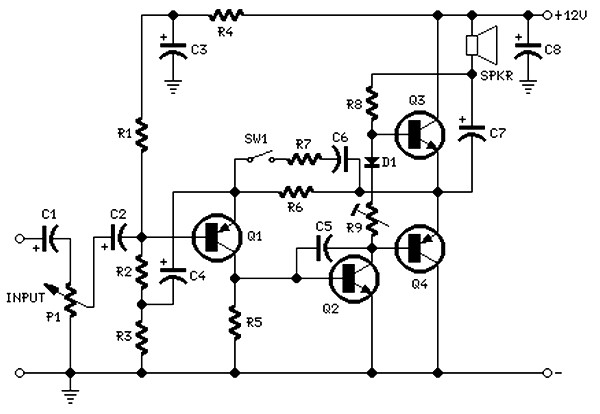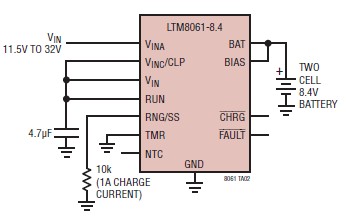
HANGMAN schematic
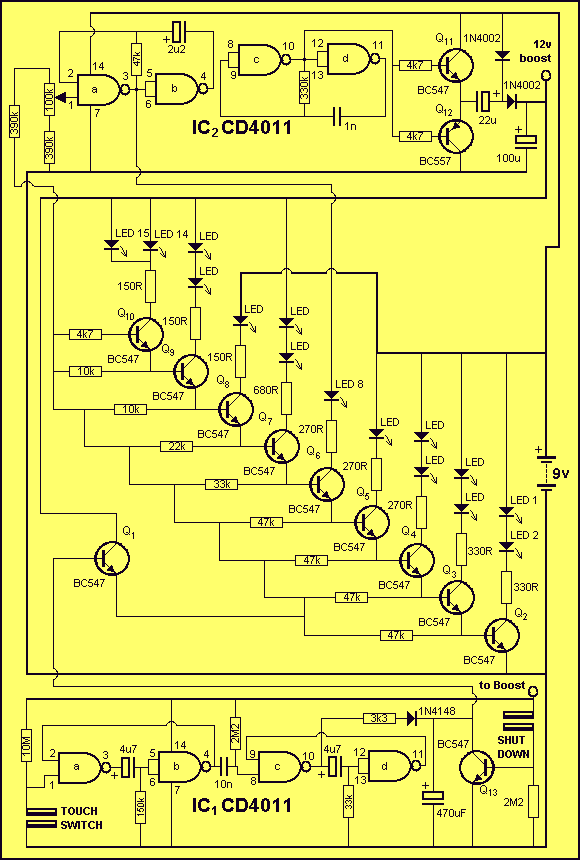
Everybody likes re-discovering something they did years ago. Here's a game we all played at school. Possibly under the name of HANG THE BUTCHER. The game is quite simple. One player thinks of a word and writes down the number of letters in that word in the form of boxes or dashes. The object of the game is for the opponent to suggest letters of the alphabet, and if they are correct, are placed on the dashes in the correct order so that the word gradually appears. More: This is an electronic version of that game. The stick man and gallows are made with 15 LEDs and each time a TOUCH PLATE is touched, one more section of the cartoon is illuminated. The last LEDs to be lit are 14 and 15, which represent the fee.
The electronic version of the classic game "Hang the Butcher" utilizes a microcontroller-based design that allows for interactive gameplay through the use of touch-sensitive plates and LED indicators. The core of the circuit consists of a microcontroller, which is programmed to manage the game logic, track the number of incorrect guesses, and control the lighting of the LEDs that represent the stick figure and gallows.
The circuit includes 15 LEDs arranged to visually depict the stick figure and gallows, with each LED corresponding to a specific part of the drawing. The first 13 LEDs are used to represent the various parts of the stick figure, while the last two LEDs (14 and 15) signify the completion of the drawing, indicating the player's loss if all are lit.
Touch plates are strategically placed to allow players to input their letter guesses. Each touch plate is connected to the microcontroller, which detects the input and processes it against the hidden word. If the guessed letter is incorrect, the microcontroller sends a signal to illuminate the next LED in the sequence, thereby providing visual feedback to the player.
Power for the circuit is typically supplied by a battery or an external power source, ensuring that the system operates efficiently. Additionally, resistors are used in series with the LEDs to limit current and prevent damage. The microcontroller can be programmed using a simple coding environment, allowing for easy updates and modifications to the game logic or user interface.
Overall, this electronic version of "Hang the Butcher" combines traditional gameplay with modern technology, providing an engaging experience that can be enjoyed by players of all ages.Everybody likes re-discovering something they did years ago. Here`s a game we all played at school. Possibly under the name of HANG THE BUTCHER. The game is quite simple. One player thinks of a word and writes down the number of letters in that word in the form of boxes or dashes. The object of the game is for the opponent to suggest letters of the alphabet, and if they are correct, are placed on the dashes in the correct order so that the word gradually appears.
This is an electronic version of that game. The stick man and gallows are made with 15 LED`s and each time a TOUCH PLATE is touched, one more section of the cartoon is illuminated. The last LED`s to be lit are 14 and 15, which represent the fee 🔗 External reference
The electronic version of the classic game "Hang the Butcher" utilizes a microcontroller-based design that allows for interactive gameplay through the use of touch-sensitive plates and LED indicators. The core of the circuit consists of a microcontroller, which is programmed to manage the game logic, track the number of incorrect guesses, and control the lighting of the LEDs that represent the stick figure and gallows.
The circuit includes 15 LEDs arranged to visually depict the stick figure and gallows, with each LED corresponding to a specific part of the drawing. The first 13 LEDs are used to represent the various parts of the stick figure, while the last two LEDs (14 and 15) signify the completion of the drawing, indicating the player's loss if all are lit.
Touch plates are strategically placed to allow players to input their letter guesses. Each touch plate is connected to the microcontroller, which detects the input and processes it against the hidden word. If the guessed letter is incorrect, the microcontroller sends a signal to illuminate the next LED in the sequence, thereby providing visual feedback to the player.
Power for the circuit is typically supplied by a battery or an external power source, ensuring that the system operates efficiently. Additionally, resistors are used in series with the LEDs to limit current and prevent damage. The microcontroller can be programmed using a simple coding environment, allowing for easy updates and modifications to the game logic or user interface.
Overall, this electronic version of "Hang the Butcher" combines traditional gameplay with modern technology, providing an engaging experience that can be enjoyed by players of all ages.Everybody likes re-discovering something they did years ago. Here`s a game we all played at school. Possibly under the name of HANG THE BUTCHER. The game is quite simple. One player thinks of a word and writes down the number of letters in that word in the form of boxes or dashes. The object of the game is for the opponent to suggest letters of the alphabet, and if they are correct, are placed on the dashes in the correct order so that the word gradually appears.
This is an electronic version of that game. The stick man and gallows are made with 15 LED`s and each time a TOUCH PLATE is touched, one more section of the cartoon is illuminated. The last LED`s to be lit are 14 and 15, which represent the fee 🔗 External reference
